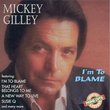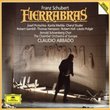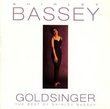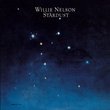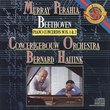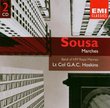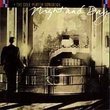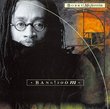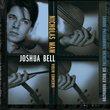| All Artists: Niccolo Paganini, Camille Saint-Saens, Giuseppe Sinopoli, New York Philharmonic Title: Paganini: Concerto for Violin and Orchestra No.1/Saint-SaŽns: Concerto for Violin and Orchestra No.3 Members Wishing: 0 Total Copies: 0 Label: Deutsche Grammophon Release Date: 1/16/1992 Genre: Classical Styles: Forms & Genres, Concertos, Instruments, Strings Number of Discs: 1 SwapaCD Credits: 1 UPC: 028942978621 |
Search - Niccolo Paganini, Camille Saint-Saens, Giuseppe Sinopoli :: Paganini: Concerto for Violin and Orchestra No.1/Saint-SaŽns: Concerto for Violin and Orchestra No.3
CD DetailsSimilar CDs
Similarly Requested CDs
|
CD ReviewsThe best recording of Saint-Saens's Violin Concerto No.3. 09/10/1998 (5 out of 5 stars) "Gil Shaham probably has the most coveted violin in the world, but he also possesses superb technique and sophisticated musicianship. I've listened to some 15 versions of Saint-Saens's magnificent third violin concerto, and Shaham's stands at the forefront. I'm sure Saint-Saens would have been delighted by the first and third movements--and perhaps surprised by the second--for the performance is the archetype of beauty, clarity, purity and perfection. His tone, glowing, lustrous, radiant, silken, sumptuous, earnest, and varnished, is optimally suited to this piece, and it alone captivates the listener. In the first movement, the orchestra starts the simmering tension from pianissimo, but I prefer it to begin with a strike, as in Szeryng's and Milstein's versions. Nevertheless, this arguable defect is more than compensated by the soloist's ravishing, riveting tone and cogent, suave interpretation. The second movement is played much slower than the other versions (9'53 compared with Szeryng's 7'21). Saint-Saens's tempo marking is "Andantino quasi allegretto" [a bit faster than Andante (walking speed), almost like Allegretto (moderately quick; pretty lively)], which might make Szeryng's speed seem more valid if we are to strictly stick to the composer's intention. But after listening to both renditions, I found Shaham's slow pace strikingly wonderful and bewitching, and I conjecture that Saint-Saens too will be amazed. Shaham's interpretation is warm and subtle, and unlike Szeryng's elegant but rather cerebral rendition--though Saint-Saens himself may prefer that--his playing is imbued with flowing platonic love which is most charming. Like Cho-Liang Lin, he slows down towards the end, and plays the final harmonics at the slowest pace but creates a spellbinding ambience: serene, sublime, and celestial. In the most technically challenging third movement, his virtuosity is second to none, though two or three string crossings aren't seamlessly smooth, and one F sharp not perfectly in tune. Unlike Lin and Milstein, he varies his execution of the many chords (broken or simultaneous) and arpeggios (legato or staccato) in the recitative-like parts. He also frequently employs accents and contrasting dynamics to bestow abundant nuance to the already splendid movement--it needs, however, a great artist and technician to fully manifest its splendour--which encompasses the gamut of emotions and expressions. In sum, the solo performance of this fabulous concerto by the 18-year-old superstar--who used to attend normal high school during the weekdays--is stylish yet convincing, and the most gratifying one I've ever heard. The conductor and orchestra are not as perfect, though. In the third movement, for example, I feel the orchestra comes in too hasty after the introduction. And at one of the movement's climaxes, the pivotal drum is not hit at the precise moment. But apart from these and the aforementioned start of the first movement, the accompaniment is generally brilliant. Droves of young modern virtuosos have recorded Paganini's first violin concerto, and the renditions shouldn't be disparate, for the piece is comprised solely of bravura and lyrical passages. Shaham's tone is perhaps unsurpassed, and his interpretation is at least sterling. In the opening movement, Paganini's verbose tutti introduction is thankfully truncated. The technical exigencies written by Paganini are played virtually spotless throughout, yet his Sauret cadenza is a notch below the supreme Mullova version. The first movement is played leisurely, comfortably and with plenty of rubato--in this respect marginally superior to Mullova's recording. His performance of the second movement is flawless and superb. The last movement is disappointing in that he, like several other violinists (e.g. Szeryng, Midori, and Grumiaux), omitted the intriguing section beginning with the G-string horn-like motif, and thus this movement becomes too repetitious and lacking in material. But the parts he did play were scintillating, and he outshone Mullova in the inhuman passage of double-harmonics--played with seeming ease, gracefulness and near perfection." Top-shelf Paganini M. Baran | SoCal | 02/01/2009 (5 out of 5 stars) "Top of Heap Paganini. Cannot go wrong with this CD. Fantastic performances. Probably the one to have if you only could have one version."
|

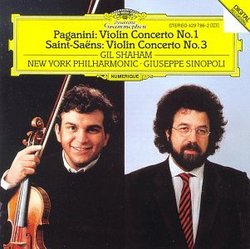
 Track Listings (6) - Disc #1
Track Listings (6) - Disc #1